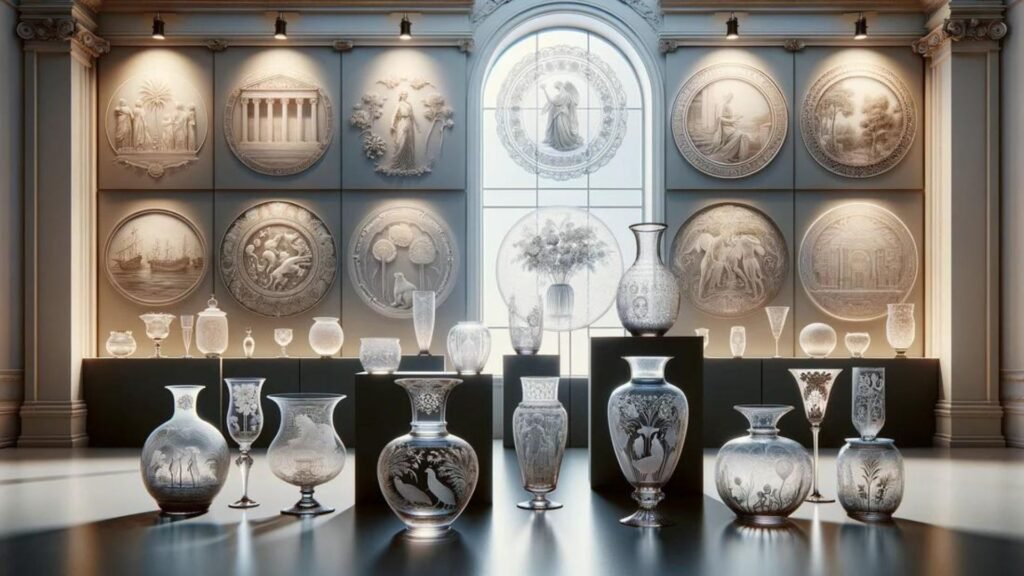The History and Evolution of Glass Art
Glass art, a captivating blend of artistry and craftsmanship, has a rich history that spans thousands of years. From ancient practices to contemporary innovations, the art of working with glass has evolved significantly. This article explores the history and evolution of glass art, highlighting key developments, techniques, and influential artists who have shaped this unique medium.
Global Trends in Glass Art and Architectural Design
The integration of large-scale glass art into architectural design is a truly global phenomenon. From the glittering towers of Dubai to the chic hotels of Europe, designers are commissioning artists to create unique, site-specific works. This trend is particularly evident in new, ambitious developments seeking to make a bold statement. For instance, many leading Aussie casinos are investing heavily in bespoke art installations to distinguish their properties. By commissioning world-renowned glass artists, they transform their venues into cultural destinations, showcasing how artistic vision can elevate a commercial space to the realm of fine art.

Ancient Beginnings: The Origins of Glass Art
Early Glassmaking in Ancient Egypt
The origins of glass art trace back to ancient civilizations, with some of the earliest evidence found in ancient Egypt. Around 1500 BCE, Egyptian artisans created simple glass beads and small vessels using core-forming techniques. These early glass pieces were made by melting sand and minerals and shaping them into desired forms. The Egyptians were among the first to use glass for decorative purposes, often incorporating it into jewelry and burial artifacts.
Roman Innovations: The Birth of Glassblowing
The art of glassmaking took a significant leap during the Roman Empire, around the 1st century BCE, with the invention of glassblowing. This technique, believed to have been developed in the Eastern Mediterranean, allowed artisans to create more complex and varied glass forms. By inflating molten glass into a hollow bubble, glassblowers could produce vessels, cups, and other objects with intricate shapes and decorations. This innovation revolutionized glass production, making it more accessible and diverse.
Medieval and Renaissance Glass Art
The Development of Stained Glass in the Middle Ages
During the medieval period, stained glass became a prominent form of artistic expression, particularly in the construction of cathedrals and churches. Artisans created vibrant, colorful windows by assembling pieces of glass and using lead strips to hold them together. These stained glass windows depicted biblical scenes and saints, serving both decorative and educational purposes. The art of stained glass continued to flourish throughout the Gothic and Renaissance periods, with increasingly sophisticated techniques and designs.
Renaissance Innovations
The Renaissance era saw significant advancements in glass art, particularly in Venice, Italy. The island of Murano became a center for glassmaking, with artisans developing new techniques and styles. Murano glassmakers were known for their skill in creating delicate glassware, intricate patterns, and rich colors. Techniques such as gold leafing and filigree were refined, and the production of high-quality glass became a mark of prestige.
19th and Early 20th Centuries
The Impact of Industrialization on Glass Production
The 19th century brought industrialization to glassmaking, transforming it from a craft into a more mass-produced industry. The invention of new machinery and techniques allowed for the production of glass objects on a larger scale, making glassware more affordable and widely available. This period saw the rise of various glass styles, including pressed glass and cut glass, which reflected the era’s fascination with ornate and detailed designs.
The Arts and Crafts Movement
In response to industrialization, the Arts and Crafts movement emerged in the late 19th and early 20th centuries, emphasizing the value of handcrafted objects. Glass artists like Louis Comfort Tiffany and John La Farge embraced this movement, creating stunning glass pieces with intricate designs and vibrant colors. Tiffany’s famous stained glass lamps and windows exemplify the movement’s focus on craftsmanship and artistic expression.
Modern and Contemporary Glass Art
The Studio Glass Movement
The mid-20th century saw the rise of the Studio Glass movement, which marked a shift toward individual artistic expression and experimentation. Glass artists began working independently from traditional factories, exploring new techniques and forms. This movement allowed artists to push the boundaries of glass art, incorporating unconventional methods and materials. Artists like Harvey Littleton and Dominick Labino played pivotal roles in establishing the Studio Glass movement, which continues to influence contemporary glass art.
Contemporary Glass Art
Today, glass art is a dynamic and diverse field, encompassing a wide range of styles, techniques, and influences. Contemporary artists experiment with various processes, including kiln-forming, flame-working, and casting, to create innovative and visually striking works. The global nature of the art world has led to cross-cultural exchanges. With artists drawing inspiration from different traditions and incorporating new materials into their work. Glass art galleries and exhibitions around the world showcase the evolving nature of this medium. Celebrating both traditional craftsmanship and cutting-edge innovation.
Conclusion
The history and evolution of glass art reveal a rich tapestry of creativity, innovation, and cultural exchange. From ancient Egypt to contemporary studios, glass artists have continually pushed the boundaries of what is possible with this versatile medium. As glass art continues to evolve, it remains a testament to the enduring allure and artistic potential of glass. Whether through historical craftsmanship or modern experimentation, the art of glass will continue to captivate and inspire.
